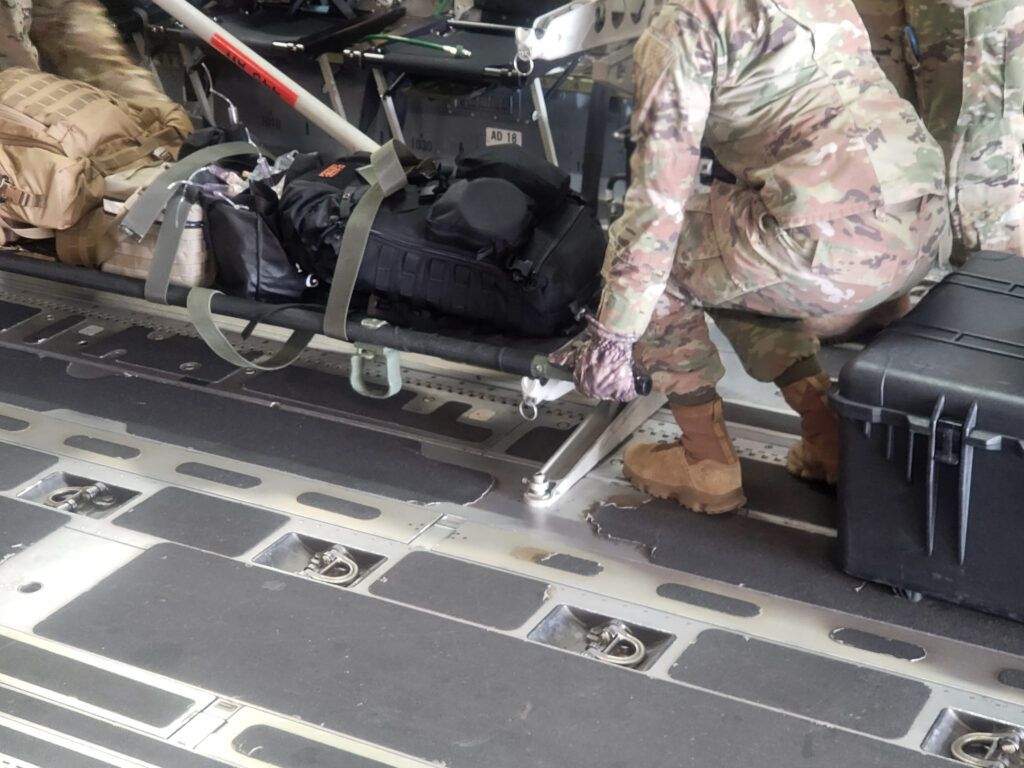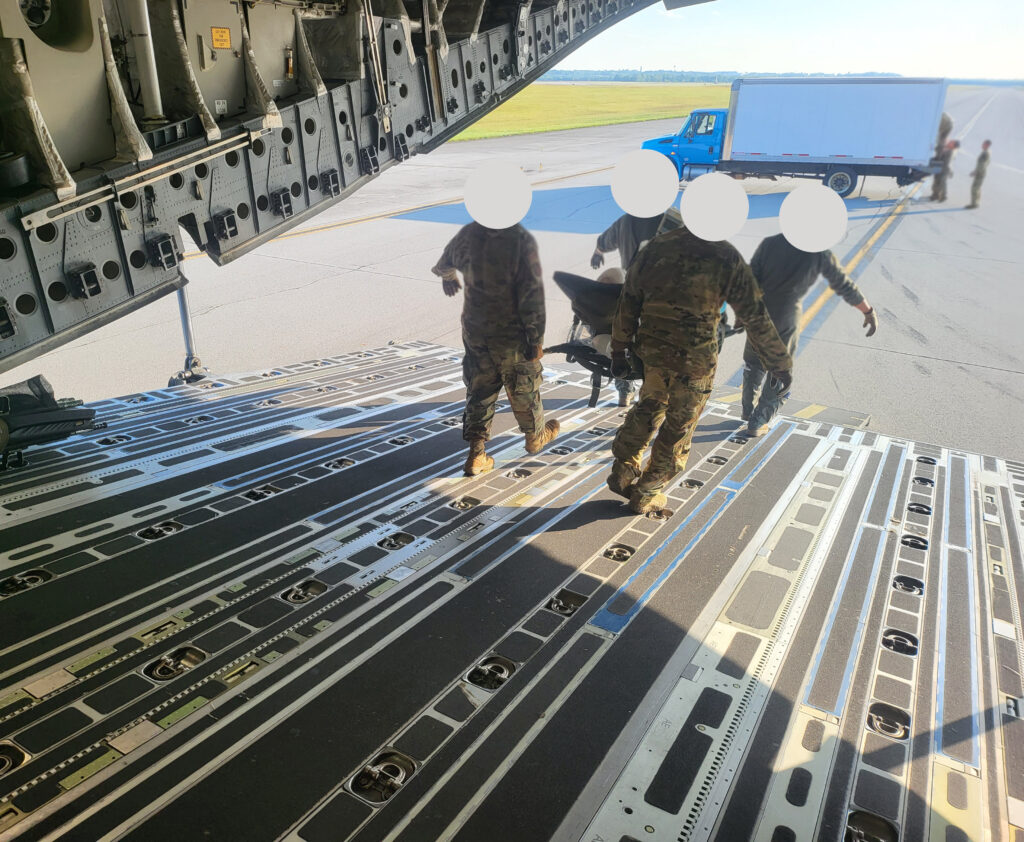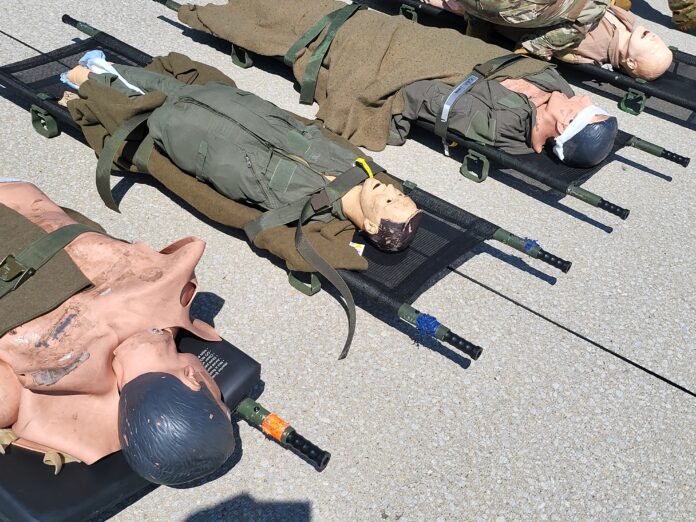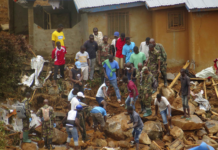Introduction
When presented with the topic of mass casualty incidents, there are many ways you can interpret it. Do you think of natural disasters, man-made crises, or something completely different? After reading the initial statement from Battelle, “Thinking of a mass casualty or a rescue event, how could any capable person (soldier or civilian) safely and adequately transport an injured person (soldier or civilian) to receive care?” I became interested in the military aspect. Natural disasters and other events caused by man are important, but that doesn’t mean the military should be put on the back end. As history continues our country will always have to fight, and with that comes casualties, and there is no reason anyone who dies or gets hurt on the front lines should be any less of a concern than a civilian.
How can the military change the way they transport soldiers, on a large scale, to better handle these situations? Given that removing those who are injured is a concern when responding to MCIs, and that moving casualties is of the same importance, it opens opportunities to explore this mode of transportation. Given that death tolls have risen within the military in recent years. Comparing the Vietnam war to the war in Iraq, records show 58,220 U.S. military fatal casualties came of the Vietnam War [4], and that approximately 177,000 national military and police from Afghanistan, Pakistan, Iraqi, and Syria allies have died [5]. The military plays an important role in protecting the United States and its citizens from direct threats, and they also help maintain peace and stability in regions critical to U.S. interests and underwrite U.S. defense commitments around the world [6]. It raises the question of which aspect is more critical when dealing with military MCIs.
Research
From here it becomes a question of where do we go? The military is so vast and has so many different branches, protocols, and members it’s hard to find a starting point. In reality, the research would simply lead us down a path. The focus quickly narrowed down from the general military to ground troops across various terrains that interact with litters. The interesting part, however, is how we got there.
Standard research was done throughout the process, reading articles, doing interviews, and 2D prototyping, but where I found my most critical information came online through a platform called Redditt. To reach the most people involved in the military, I reached out to multiple college ROTC programs, Facebook groups, and multiple Reddit pages. I had some trouble with the college ROTCs besides OSU’s and had no luck on Facebook, but the people of Reddit were very responsive, just not in a positive way. I had posted in r/ROTC, r/nationalguard, r/Military, r/army and got different results from all of them. r/army permanently banned me from their page, r/Military didn’t give me permission to post my survey after reaching out to the moderators, in r/ROTC it posted, but I got no results or interactions, and the most insightful of them all was r/nationalguard. In about a week’s time, it had gotten 2,000+ views, but I only got 6 survey responses. People had responded to the post calling me “China” and telling me to “go enroll buddy and find out”. My posts kept getting downvoted while negative comments from people online were getting upvoted. I thought it was extremely interesting how cooperative Ohio State’s ROTC was in person, and how negative the people online were. It put into perspective how responsive people surrounding the military can be and gave me insights going forward into how to reach out and communicate with groups surrounding any military branches.
Transportation
Transportation in the military is indeed a multifaceted domain, extending well beyond the scope of aircraft and humvees, the latter being formidable military trucks. One of the most critical components of military transport is the employment of litters. These litters, essentially modern-day stretchers, have undergone significant evolution to meet the demands of frontline deployment. A noteworthy example is the two-man litter-carrying system, a creative approach challenging conventional methods and fostering innovative thinking among military personnel.

Expanding our exploration of military transportation, it is imperative to examine the integration of litters into various modes of conveyance. Consider, for instance, the metal hooks strategically positioned on the floors of military aircraft. These hooks serve a pivotal role in securing litters during transport, ensuring the safe and stable carriage of wounded soldiers. Nevertheless, it is worth noting that these hooks also introduce limitations, as the number of litters that can be accommodated on a single flight is restricted. This constraint underscores the delicate balance between optimizing transportation logistics and delivering efficient medical care on the battlefield.
Furthermore, the impact of these considerations extends beyond the air domain. They also affect the capacity of military humvees, influencing the number of personnel that can be efficiently transported within the confines of these vehicles. This interplay between humvees, aircraft, and litters underscores the intricate web of military transportation and the critical role of innovative design in serving the common good. It ensures that military personnel, equipment, and wounded soldiers can be transported swiftly and safely, fostering mission success and safeguarding the welfare of those in the field.
Litter Relationships
In regards to transportation in the military and not humvees and planes, the human-to-human transportation system, litters are the number one option. After researching and talking to multiple military members, litters have been around for a while and will continue to be utilized. Within the survey, every participant believed litters are the best way to transport people, but every person also had a different problem with it. It showed people have problems with the physical design when it comes to litters, but the interesting aspect of litters isn’t the materials, ergonomics, or these problems, but the relationships in which they are used.

These things are used in all sorts of ways from being picked up and stored in Humvees to being air-lifted in helicopters. Each one of these interactions calls for a different protocol and has a varying amount of people that are involved. Multiple people are used to get litters into the backs of these vehicles and only so many can be secured in an aircraft. These actions involve, to me, what feels like way too many people and that interested me as an area of exploration. So, these different actions and different areas give the opportunity to explore where and how litters are used rather than the litter themselves.
Overlooked
Firstly, the significance of straps and restraints in the litter and carrier system cannot be overstated. These elements serve a dual purpose: securing the wounded on the litter and attaching them securely within the vehicle in which they are being transported. Often taken for granted, these components play a vital role in ensuring the safety and stability of the wounded during transit.
Another aspect that deserves attention is the carrier system itself. Litters come in various designs, each with its specific protocols, which may call for either a two-person or four-person carrying method. Surprisingly, this seemingly minor difference in the number of carriers fundamentally alters the experience for both the individuals transporting the litter and the wounded person within it. The choice between a two-man or four-man carry can significantly impact the efficiency and comfort of transportation in the field.
Moreover, the securing of litters on various types of military vehicles is a critical consideration. There are two primary methods: using stanchions with indents that lock the litters in place and metal clips integrated into the floor. These securing mechanisms, often overlooked, affect the number of litters that can be efficiently transported in a single operation. Optimization of these securing techniques is crucial for mass transportation of wounded soldiers.

Lastly, examining the standard procedure for loading an injured person with medical equipment highlights an essential but resource-intensive aspect of the process. Notably, it requires a considerable number of personnel to accomplish this task effectively. While manageable in a controlled environment, such resource-intensive procedures may prove challenging during Mass Casualty Incidents (MCIs), emphasizing the need for efficient protocols and resource allocation in demanding situations.
Conclusion
Mass casualties can happen anywhere and anytime, and there are procedures and people who will be ready to answer the call when it happens. Whether it be a landslide or a large amount of casualties on the front lines, there are ways to be better prepared. In a realistic world, one person may not be able to change an entire military’s protocol, but they can help these people be more prepared.
So, how does this all tie into what Battelle had initially asked us to explore?
Mass casualties within the military have been targeted and beyond that, their relational transportation. Not the physical devices though, but the interactions in which they have. It would be unrealistic to redesign the vehicular transportation that the military uses within one thesis, but there are areas where someone can make a difference. That is what makes the prompt interesting, not the redesign of a singular vehicle or aircraft, but a chance to deep dive into how the military interacts with what they’ve been given and finding ways to optimize their procedures. Are there new products that can be put in their hands? Something that can expedite what would otherwise be a long process? A mechanism that takes people away from the loading process and allows them to go to areas that still need help? These are all questions that have been posed and will be explored through craft to hopefully find a response to our initially proposed prompt.




